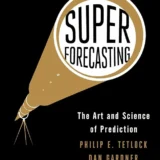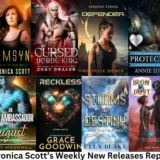A talented team helmed by award-winning producer Sky Conway, including actor fan favorites such as Walter Koenig, plan to embark on a television pilot next year for John E. Stith’s MANHATTAN TRANSFER, the Tor Books novel about the kidnapping of Manhattan by aliens.
We asked John to write a series of short pieces to chronicle this thirty-year journey.
Here is part two.
***
In part one, I wrote about selling MANHATTAN TRANSFER and embarking on marketing the film rights. Before moving forward, I want to go back and talk about the genesis of the idea for MT. About why my starting point for the novel was something as audacious as the kidnapping of a major city.
Russell Galen, the agent I was hoping to move to after my first agent started withdrawing from the business for health reasons, penned an article in Writers Digest called, “New York Overheard: How to Sell ‘Big, Big, Very big.’ “ Russ started with the story of his two-year-old daughter being obsessed with Sesame Street and being accustomed to seeing the characters six inches tall on TV. He took her for a walk in a park where they encountered people dressed as the Sesame Street characters and who were shaking hands with the crowd. She was blown away by one of them who was even taller than her father and her response was, “Big, big, very big Ernie!”
Russ went on to explain his feeling that breakout books often appealed to this “Big, big, very big,” notion. In novels, that translates not necessarily to “long” but to big consequences for failure or success, to inherently dramatic locales. The characters are extraordinary or the events bring out their exceptional qualities.
I don’t remember the point at which the notion of an earth city being captured by aliens struck me, but I remember the subsequent decisions, and later I became aware of some of the images I’d absorbed in earlier reading.
Probably the earliest image came from comic books. In the tales of Superman, we know he came from the planet Krypton, which was ultimately destroyed. What I had to look up was the fact that it was Kandor, one of Krypton’s largest cities, that Brainiac shrank and abducted. And put under a dome.
Reading widely is a very good thing for the growth of a writer, but it can sometimes fight against the writer, too. If I can think of a prior example of a story that works its way into my imagination, I can sometimes too-quickly reject the notion and move on to something that feels newer to me. If right at that time I had clearly remembered the images of Kandor under the dome, I might have rejected the MANHATTAN TRANSFER nugget and moved on. If Stephen King’s UNDER THE DOME had come out before MT, I might have ignored my idea, even though the stories are far different. (The fact that some of the imagery is similar was by itself enough to create a period about a decade ago during which the possibilities of an MT film adaptation seemed more remote.)
James Blish’s CITIES IN FLIGHT series created another set of images lurking in my memory. Again, the events are much different, but anyone looking at a poster for MT might well think of CIF too. Writers stand atop the shoulders of those who have come before us, or at least we ride their coattails. It’s tough to create new work with no awareness of what has gone on before.
Once I started building a story around the kernel of aliens kidnapping a city, though, I had to decide which city to grab. I settled on Manhattan for a variety of reasons. It is a place I’d already been and could go back to for more research. It is filled with iconic images because that metropolis has inspired so many visual treatments. It has a well-defined boundary since it’s an island. And it’s a very well-documented city so I could access information on its connective tissue—how roads and bridges intersect, where subways, sewers, power lines, and aqueducts travel underground.
Once I’d settled on which city to torment, I had to find a reason to drive the action. Would these aliens be searching for live food, wanting to build a fairly ambitious zoo? On a micro level, and a macro level, I can be a fairly slow writer because I often reject the first one or two ideas that occur to me, in hopes of finding a slightly different way of looking at a problem.
Just as an aside, this is one trait that means writers still have a bit of time before “AI” or more accurately, advanced programming, is a threat to our jobs. The large language models work because they are very good at predicting what word comes next in a sentence. Writers often work hard to make that next thing unpredictable. When my heroine in TINY TIME MACHINE reflects on the damaged relationship with her father, she thinks not “that ship has sailed,” but “that ship has sunk to the bottom.” Not that it’s Pulitzer material, but it’s less familiar.
Once I settled on the kind of story I wanted to tell, I needed characters who would serve the story—a military leader who could organize efforts to find a way to escape. A translator whose skills might enable discussions with their captors. A city worker with knowledge of the infrastructure. A mayor who could command attention from a distracted and disorganized population. A brainy inventor who could foster some of the needed technological tools.
When the novel was published, it gained some praise and some complaints. (As writers we learn early on that it definitely is true that you can’t please everyone.) One reader complained that New Yorkers didn’t panic enough, that they adapted more quickly to this hostile situation than was reasonable. They should have fallen apart for a good while.
And then came 9/11. That reader didn’t know many New Yorkers.
To be continued…
Copyright © 2023 by John E. Stith
***
John E. Stith is the author of REDSHIFT RENDEZVOUS, a Nebula Award nominee, MANHATTAN TRANSFER, and numerous other novels and short stories. His works with Ace Books and Tor Books have been bought by the Science Fiction Book Club, optioned for film, and translated into many languages. He has optioned feature-film screenplays and has sold to television (Star Trek). Find him at www.neverend.com. His latest novellas are TINY TIME MACHINE and TINY TIME MACHINE 2: RETURN OF THE FATHER from Amazing Stories. His latest novel is PUSHBACK, a mystery-suspense novel. and a finalist for the Daphne Du Maurier Award for Excellence in Mystery/Suspense. In 2024, look for TINY TIME MACHINE 3: MOTHER OF INVENTION, and his new SF novel, DISAVOWED, both from Amazing Stories.
To be on his list of occasional writing updates, visit http://eepurl.com/bGL4kj.
The Facebook page for the streaming series is https://www.facebook.com/
John E. Stith is the author of REDSHIFT RENDEZVOUS, a Nebula Award nominee, MANHATTAN TRANSFER, and numerous other novels and short stories. Several of his works with Ace Books and Tor Books have been bought by the Science Fiction Book Club, optioned for film, and translated into many languages. He has optioned several feature-film screenplays, and has sold to television (Star Trek). Find him at www.neverend.com.










1 Comment